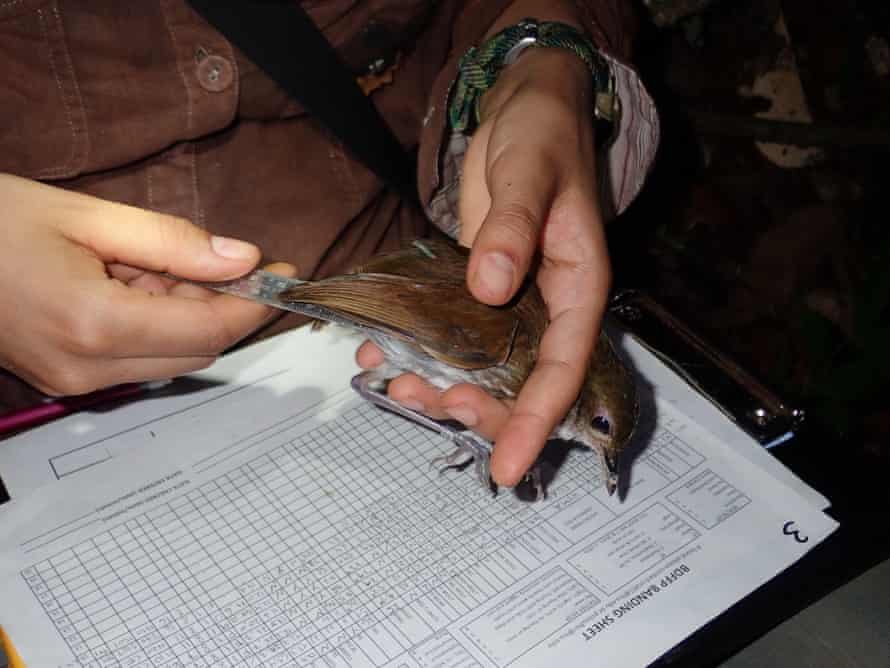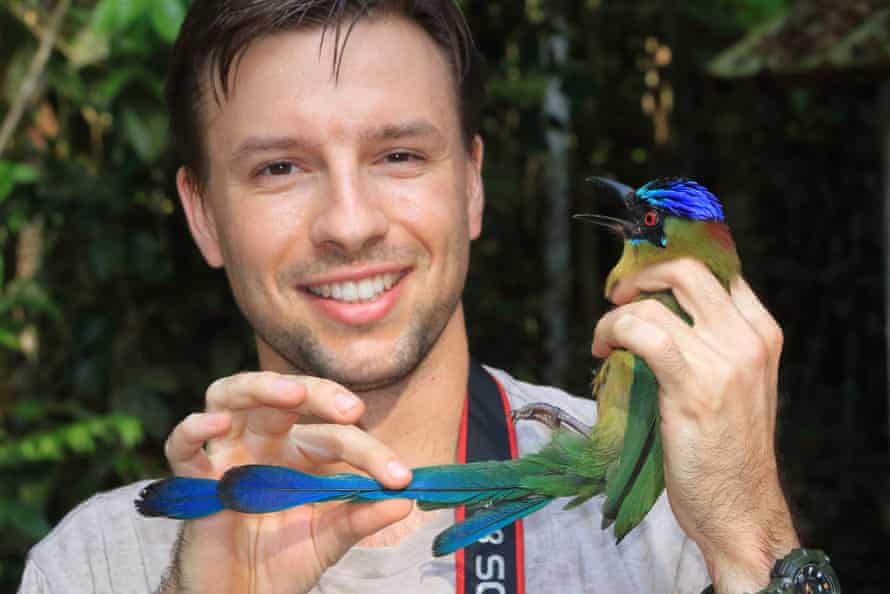Amazon birds shrink but grow longer wings in sign of global heating
Some species in Brazil have shrunk by nearly 10% over 40 years of measurements, say researchers

Birds in the Amazon are becoming smaller but growing longer wings, a study has found, with scientists saying global heating is the most likely explanation.
Several recent papers have reported birds getting smaller, but as their subjects were migratory birds there were many confounding factors that could have explained the results, such as hunting, pesticide use or habitat loss.
The new study was conducted on non-migratory birds in pristine rainforest but the results were the same: the birds are getting smaller, and the warmer climate is the only known variable.
The research took place at the Amazon Biodiversity Center close to Manaus, in the Brazilian Amazon. Since the 1970s scientists have been using the remote area as a control location so they can study the effects of deforestation and development on the ecosystem.
Generations of scientists have been capturing and examining birds in the area with an unvarying methodology: they catch them in mist nets, weigh them and measure their wings.

Now scientists analysing data on 77 bird species over the past 40 years say nearly every non-migratory species found there has become smaller. One-third of them also bear longer wings.
The researchers believe global heating is behind the morphological shift. Since the 1970s, the region has warmed 1.65C in the dry season and 1.0C in the wet season. In addition, the wet season has become wetter and dry season has become drier.
Last year, Vitek Jirinec, the lead author of the new study, his adviser Philip Stouffer and colleagues published a paper reporting falling populations in nine of 79 non-migratory bird species in the control sites. Climate was the only factor that has changed there, as far as anyone knows, and they concluded it must be the cause.
Most of the birds in the new paper, published in Science Advances, spend their lives within a radius of a few kilometres, but the researchers found some species had shrunk by nearly 10% over 40 years of measurements.
Jirinec, of the Integral Ecology Research Center in California, said changing temperature or precipitation – or both – must play a role in the findings.
How could climate change alter avian physique? One plausible explanation the researchers invoke is a 150-year-old principle called Bergmann’s rule. It states that closely related organisms are smaller the closer they are to living at the equator, thought to be because larger bodies retain warmth better.

Jirinec’s paper suggests the same process could be at work in the Amazon: increased temperatures, which one might normally expect to find closer to the equator, are causing smaller bodies.
The scientists say the increase in wing length is more puzzling but suggest birds may now need to fly further. They were unsure whether the changes were caused by evolutionary pressures – individuals with advantageous characteristics breeding more successfully – or whether the birds were changing shape as they aged to adapt to the changed environment.
Jirinec wonders whether the same pattern is occurring elsewhere, where nobody is carrying out the same research. “Who knows where else this could be happening?” he said.
Mario Cohn-Haft, an ornithologist at the National Institute of Amazonian Research Institute in Manaus, says the research worries him. But it also gives him new reasons to marvel at nature’s genius: “It’s impressive to imagine birds adapting their body type to the changing environment.”
Despite such concerns, Cohn-Haft said there was room for a little optimism. Perhaps, he said, with longer wings, now-sedentary species might begin migrating to more suitable habitats. “Maybe they’re not [the] passive, sitting ducks we might have imagined,” he added.